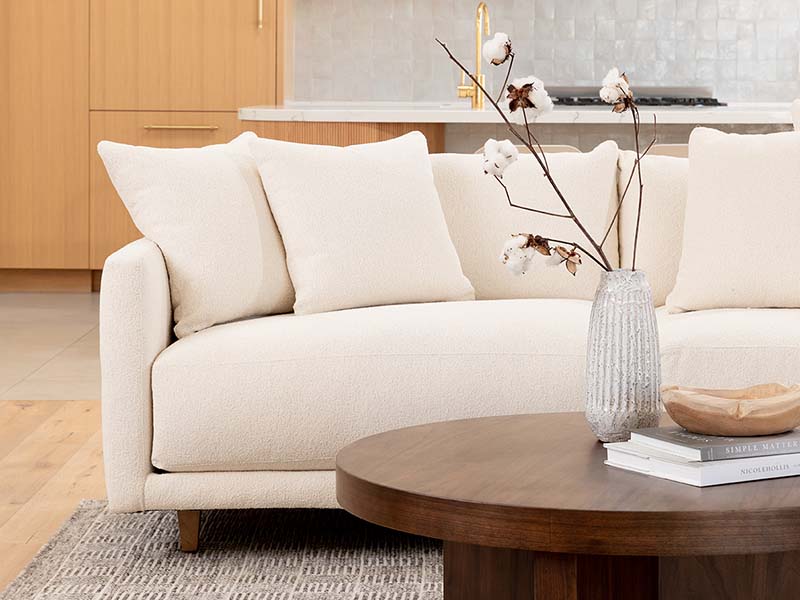Performance Fabric is a term used in the furniture industry to describe fabrics that are easy to clean and withstand the wear and tear of everyday life. Simple stains should be able to come out with a little water and blotting. Tough stains like coffee, cupcakes, and dirty paws, should be able to come out with some household or upholstery cleaner. Performance fabrics should also resist abrasion over the long term. You shouldn’t see the fabric start to fall apart after a year of use. Performance Fabric is the best choice for high traffic areas and living spaces needing to stand the test of time.
Where did the Performance Fabric term come from? Early adapters of the performance fabric category were outdoor cushion and fabric manufacturers. These companies saw a need for fabric that would stay outdoors, be easy to clean, and withstand outdoor weathering. Soon after the outdoor performance fabrics were created, you saw a transition of these fabrics indoors to compete against life’s messes. Today we see a variety of performance fabrics. Some Outdoor, some indoor, and those who can perform in both outdoor and indoor spaces. Let’s look at the pros and cons of different performance fabrics easy to clean.
Types of Performance Fabrics
There are multiple ways to achieve performance, but the most common way is to choose a thread that possesses performance traits or by chemically treating (coating) a fabric.
Typical performance fabric traits are: water resistance, stain resistance, mold and mildew resistance, light fastness, durability, and antimicrobial traits. The most common threads used for performance upholstery fabric are olefin, acrylic, nylon, and polyester. Not all the threads listed have all the same performance traits so they either have to be inherently stain resistant or treated/coated. Chemically speaking, I could talk about the finishes used to make some upholstery fabrics into performance fabrics, but I’d like to focus on the fibers that are not treated with chemicals. Below are some distinct characteristics of the types of materials used to make performance upholstery fabrics.
Everything You Need to Know About Performance Fabrics

Categories:
